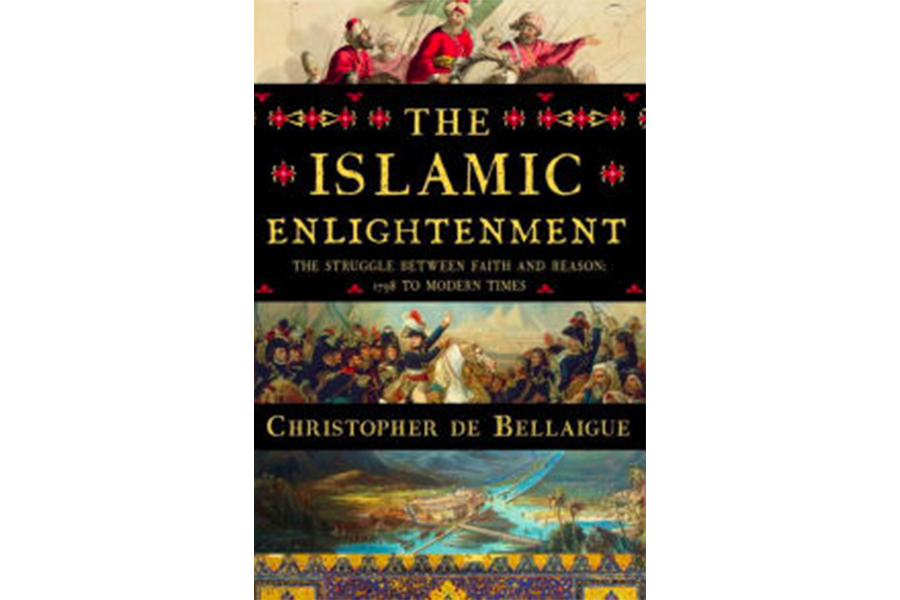'The Islamic Enlightenment' reshapes historic views of Islam
Loading...
While visiting Cairo in 1850, Gustave Flaubert wrote to a friend, “The old Orient is always young because nothing changes. Here the Bible is a picture of life today.” Flaubert’s cultural arrogance was typical of 19th-century European attitudes. He not only hazarded a vast generalization about a culture he had barely encountered, he also presumed that his inability to perceive change and dynamism meant they were in fact absent.
The historian Christopher De Bellaigue’s new book, The Islamic Enlightenment, is a deeply researched riposte to Flaubert’s condescension. Beginning with Napoleon’s invasion of Egypt in 1798 and ending with the late 20th century, De Bellaigue shows how the cultural struggles between modernity and tradition unfolded in Istanbul, Cairo, and Tehran. Where Flaubert saw a static biblical tableau, De Bellaigue discovers constant and contested transformation.
One powerful impetus for modernization was Egypt’s military defeat at the hands of the French. A 1798 skirmish that Napoleon dubbed the Battle of the Pyramids lasted only one hour, but 29 French soldiers died while the Egyptians lost roughly 1,000 troops. Napoleon’s expedition was not just a military one; a broad range of scientists and scholars accompanied the troops to collect data and perform dazzling displays of scientific knowledge for local populations. The French used an expropriated palace in Cairo to house an aviary, a botanical garden, and workshops that produced everything from microscopic lenses to sword blades.
The early 19th-century Egyptian modernizer Muhammad Ali Pasha oversaw the Westernization of the Egyptian army. Subjects like geometry and mapmaking entered the curriculum at military colleges, and European-style tactics and training increased the efficiency of the infantry and cavalry. At his summer palace in Alexandria, Pasha introduced gas lighting, billiards, and the custom of eating while seated at a table. He increased taxation, cut the power of clerics, and introduced a rice separator powered by steam. Other modernizers began teaching subjects like history, science, medicine, and geography. Medical schools even began the study of anatomy.
Anatomy posed multiple challenges to Islamic tradition. The prophet forbade cutting open a dead body, and precise anatomical drawings violated religious bans on reproducing the human form. But within a few decades, medical students in both Istanbul and Cairo were learning anatomy through dissection. Massive death tolls from plague were no longer framed as inevitable and even desirable expressions of God’s will. Improvements in public health and safety protocols dramatically decreased infection rates by the middle of the 19th century.
Yet not all changes were unambiguously positive. De Bellaigue does not simply glorify any instance of emulation as progress. By the late 19th century, European railroads supplied mass-produced goods to large stretches of the Ottoman Empire as well as Iran, which decimated local handicraft industries and enabled increasingly heavy-handed political meddling by European powers. Just as Napoleon was more interested in expanding his empire than spreading ideas in the late 18th century, the European powers in the late 19th century were motivated more by money and power than any sort of altruism.
In both cases, however, exposure to European ideas did catalyze change. The first glimmers of constitutional government, the first independent newspapers, the rise of internationalism and feminism – these and many other developments characterized the second half of the 19th century in Egypt, the Ottoman Empire, and Iran.
Though forces of reaction and conservatism were always present, the years immediately after World War I inaugurated what De Bellaigue calls a counter-Enlightenment. This was in large part a reaction to the cynical colonial land grabs and imperial meddling of Western powers in the geography and politics of the Middle East.
De Bellaigue is a knowledgeable guide through huge sweeps of cultural history. But his book gradually sinks under the weight of the many details that compose it. Focusing on a single complex and multiethnic culture over two centuries is ambitious enough; attempting to follow three such civilizations dissipates the narrative’s thematic clarity. Details proliferate, but meaning begins to recede.
But the strongest sections of the book pose powerful dilemmas that are by no means resolved. The region’s history testifies to a welter of complex truths: that venal European motives spurred both positive cultural change and encourage extremism, that modernization may improve material circumstances while creating a gaping spiritual void, and that Western demands for Islamic countries to modernize ignore the fact that they have been doing so for over two centuries.






